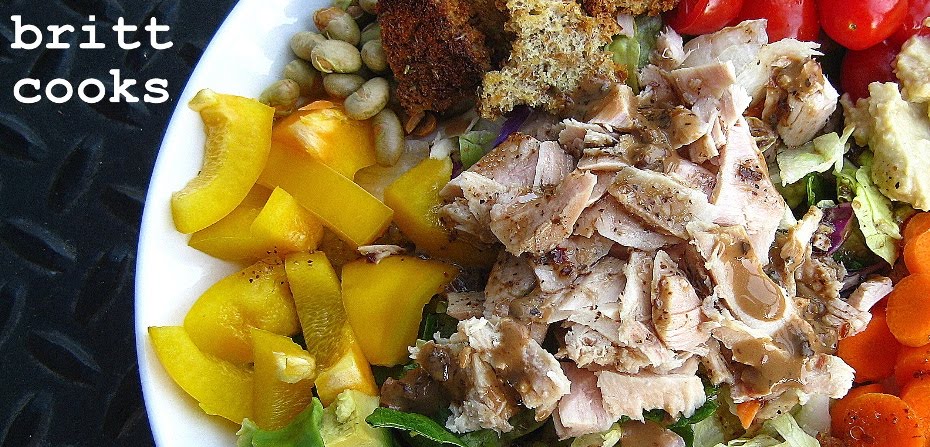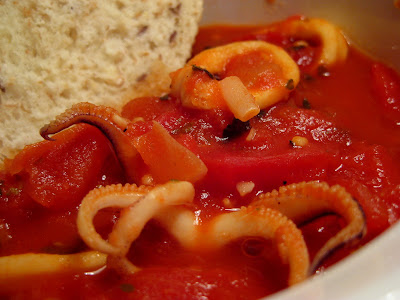
Let me set the scene:
It's Sunday.
I know that dinner won't make itself.
I know that if Jay makes dinner we'll be eating Target brand pizza.
I know that Jay's diet on Saturday consisted of Taco Bell for lunch and McDonalds for dinner.
Knowing all this it sounded like the perfect day to make the most vegetable-centric dish I could find. The boy was due for some greens.
Enter... Double Kale Quinoa Pesto, also known as the Fast Food Detox.
Quinoa is a great grain for vegetarians because it is a complete protein, meaning that it contains all 9 essential amino acids (an anomaly of vegetarian protein sources).
The addition of a leafy green like kale (known for its wealth of Vitamin K, of which each cup contains 1327% of the RDV) really kicks up the healthfulness of this recipe.
In fact, I just can't get over the surplus of heath-benefiting ingredients in this recipe. Lemon juice, olive oil, almonds... all help to keep you strong, healthy and functioning at your best! Should I mention that it is delicious? Much more so than any McNugget or Quad Steak Burrito. But maybe I'm biased by my love for vitamins...

The Stuff:
- large saute pan
- food processor
The Edibles:
- 3 cups cooked quinoa*
- 1 medium vidalia onion, diced
- 1 bell pepper, diced
- 1 large bunch kale, washed and trimmed, sliced into strips (about 5 cups uncooked)
- 5 medium garlic cloves, minced (or the equivalent of jarred or powdered garlic)
- 1/3 cup sliced or slivered almonds, toasted
- 1/4 cup freshly grated Parmesan
- 1 pinch salt (more to taste)
- hearty amount of fresh ground pepper
- 3 tablespoons fresh lemon juice
- 3 tablespoons extra virgin olive oil
Optional toppings and additions:
- slivered basil
- sliced avocado
- crumbled feta or goat cheese
- white beans
The Making:
- Heat the quinoa and set aside.
- Spray a large sauté pan with non-stick olive oil cooking spray and place over medium heat. Dump the equivalent of 1 clove minced or powdered garlic in pan, pushing it around with your wooden spoon or spatula for about 30 seconds.
- Place onion in pan and stir around so as to ensure it is completely covered with oil. Cook for about 2-4 minutes on medium, then turn down to medium low. Add the colored peppers. Stir frequently; cook until the onion turns somewhat translucent and is caramelized (really juicy looking).
- Remove the cooked diced onion and peppers from the pan and set aside in a bowl.
- Using the same pan, Spritz it with another round of non-stick olive oil cooking spray and place over medium heat. Cook 1 clove garlic, pushing it around with your wooden spoon or spatula for about 30 seconds. Add kale by the handful, stirring frequently so as to ensure oil is distributed over its surface. The green will cook down significantly, so if you feel you cannot fit it all in at once, wait until some has cooked down and add more at that point. Once all the kale is looking really wilty, turn stove off.
- To make the kale pesto: puree two cups of the cooked kale, 3 cloves garlic, 1/4 cup of the almonds, Parmesan, salt, pepper and lemon juice in a food processor. Drizzle in the olive oil and pulse until smooth.
- Just before serving, toss the quinoa, reserved onion and pepper mixture and remaining cooked kale with about 1/2 of the kale pesto. Taste and adjust if needed, you might want to add more of the pesto a bit at a time, or you might want a bit more salt or an added squeeze of lemon juice. Turn out onto a serving platter and top with the remaining almonds and some fresh basil. Some great additions include sliced avocado and feta cheese.
Serves 4 - 6.
*To cook quinoa: rinse one cup of quinoa in a fine-meshed strainer. In a medium saucepan heat the quinoa, two cups of water (or broth if you like), and a few big pinches of salt until boiling. Reduce heat and simmer until water is absorbed and quinoa fluffs up, about 15 minutes. Quinoa is done when you can see the curlique in each grain, and it is tender with a bit of pop to each bite. Drain any extra water and set aside.

 Confession: I don't particularly enjoy writing recipes. I love cooking food. I love photographing food. I really, sincerely highly dislike methodically measuring and recording the components of my creations. Doing so cramps my style. It ruins my rhythm and flow the kitchen, and takes the joy out of cooking.
Confession: I don't particularly enjoy writing recipes. I love cooking food. I love photographing food. I really, sincerely highly dislike methodically measuring and recording the components of my creations. Doing so cramps my style. It ruins my rhythm and flow the kitchen, and takes the joy out of cooking.  The Edibles:
The Edibles:







